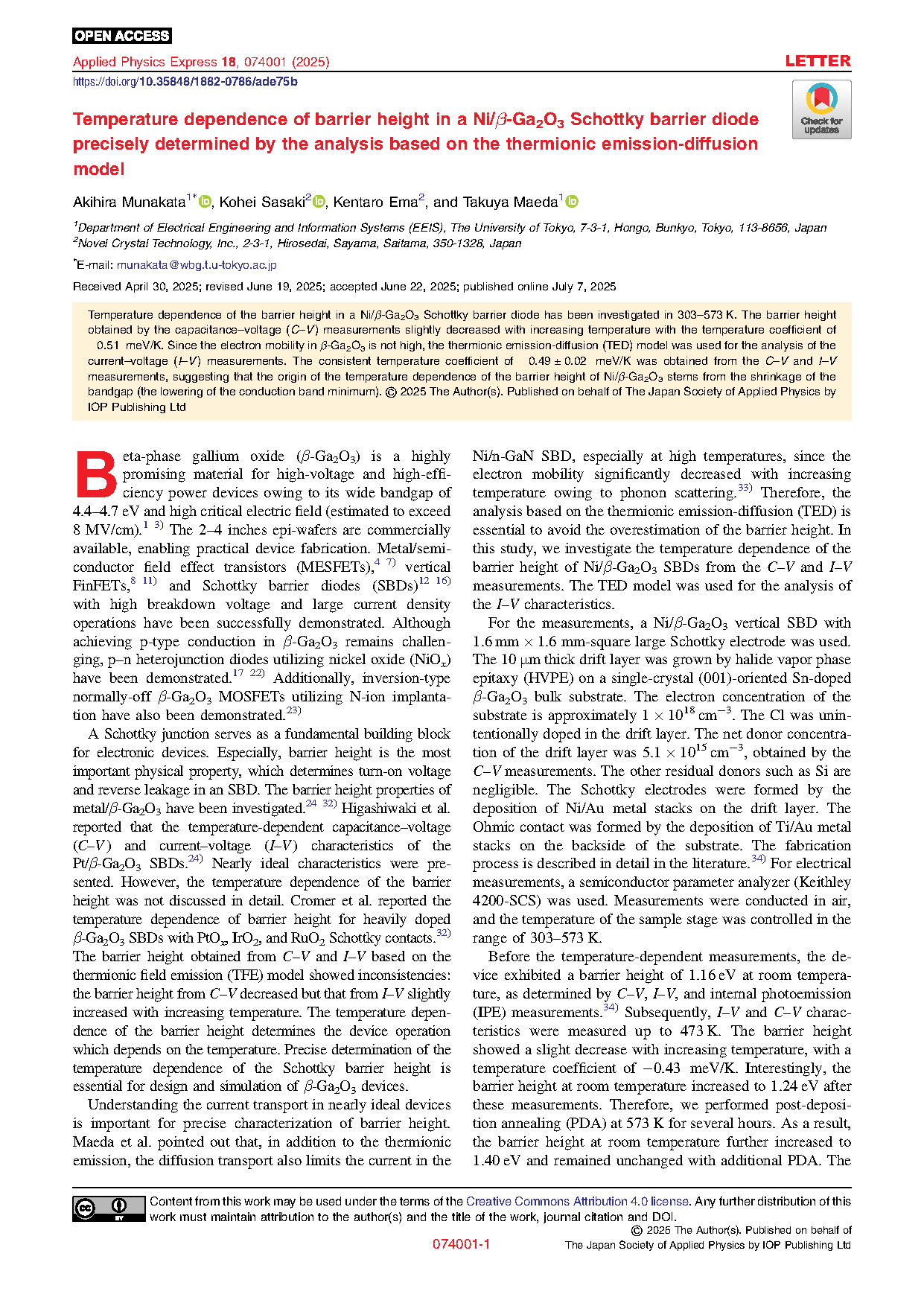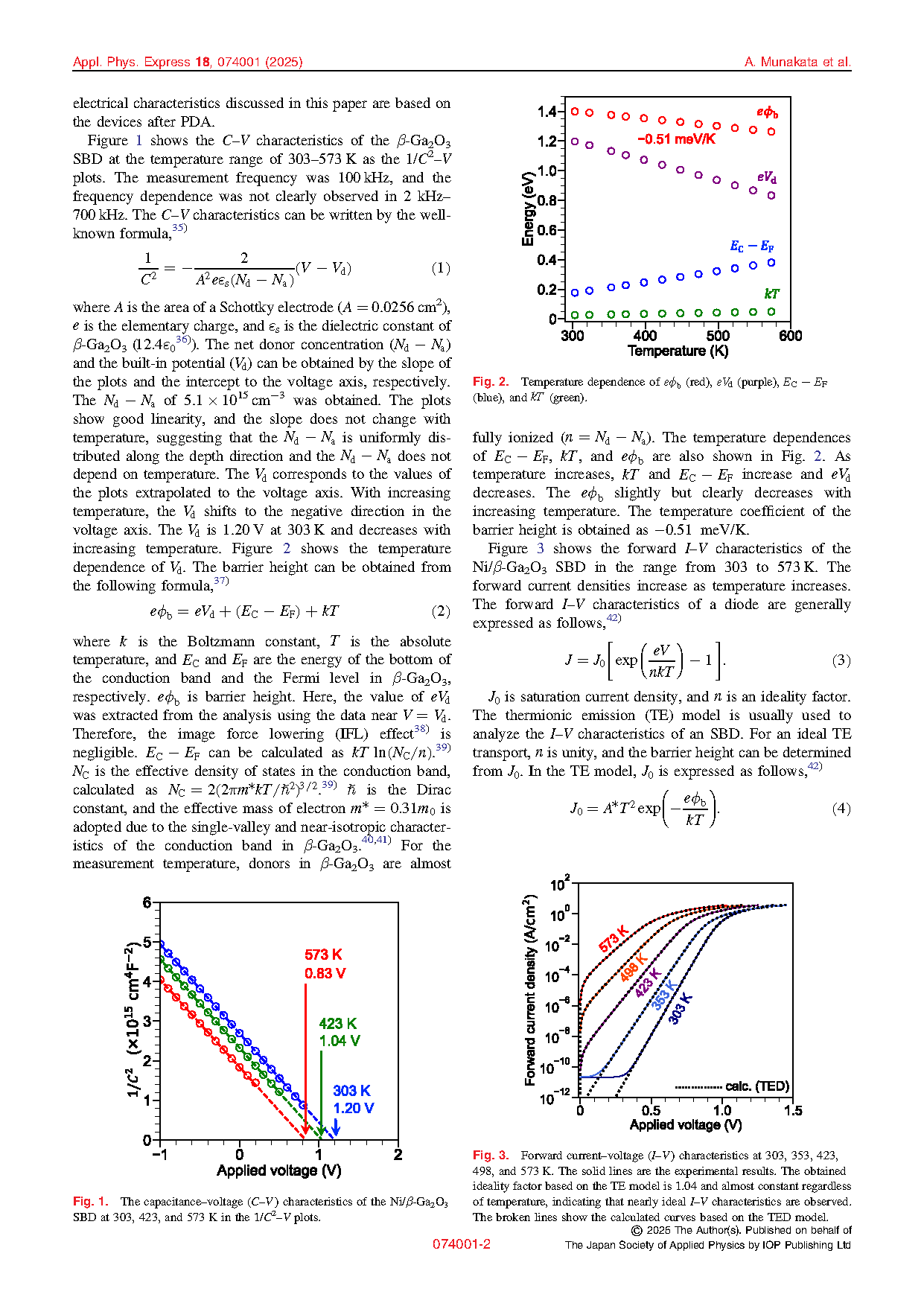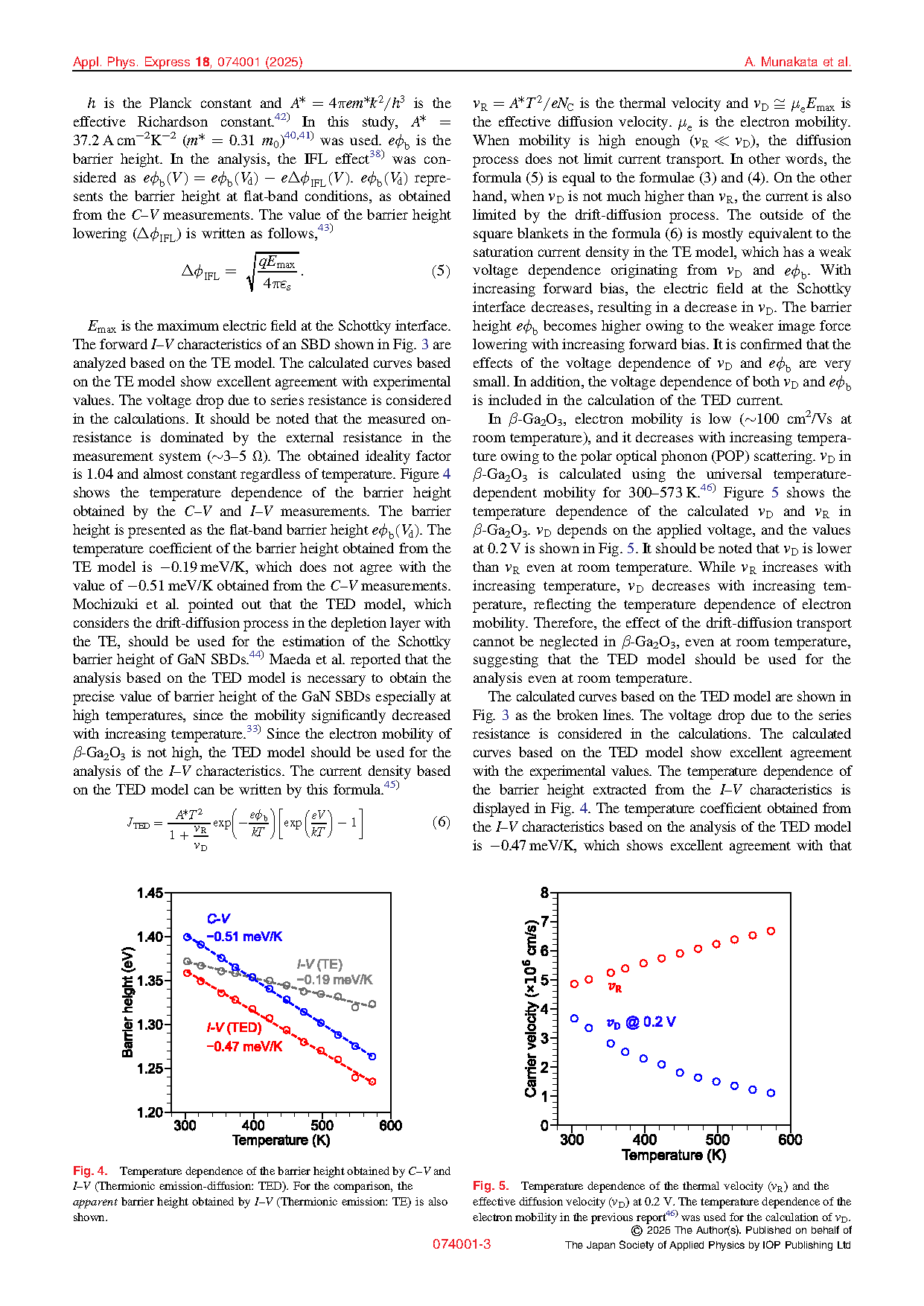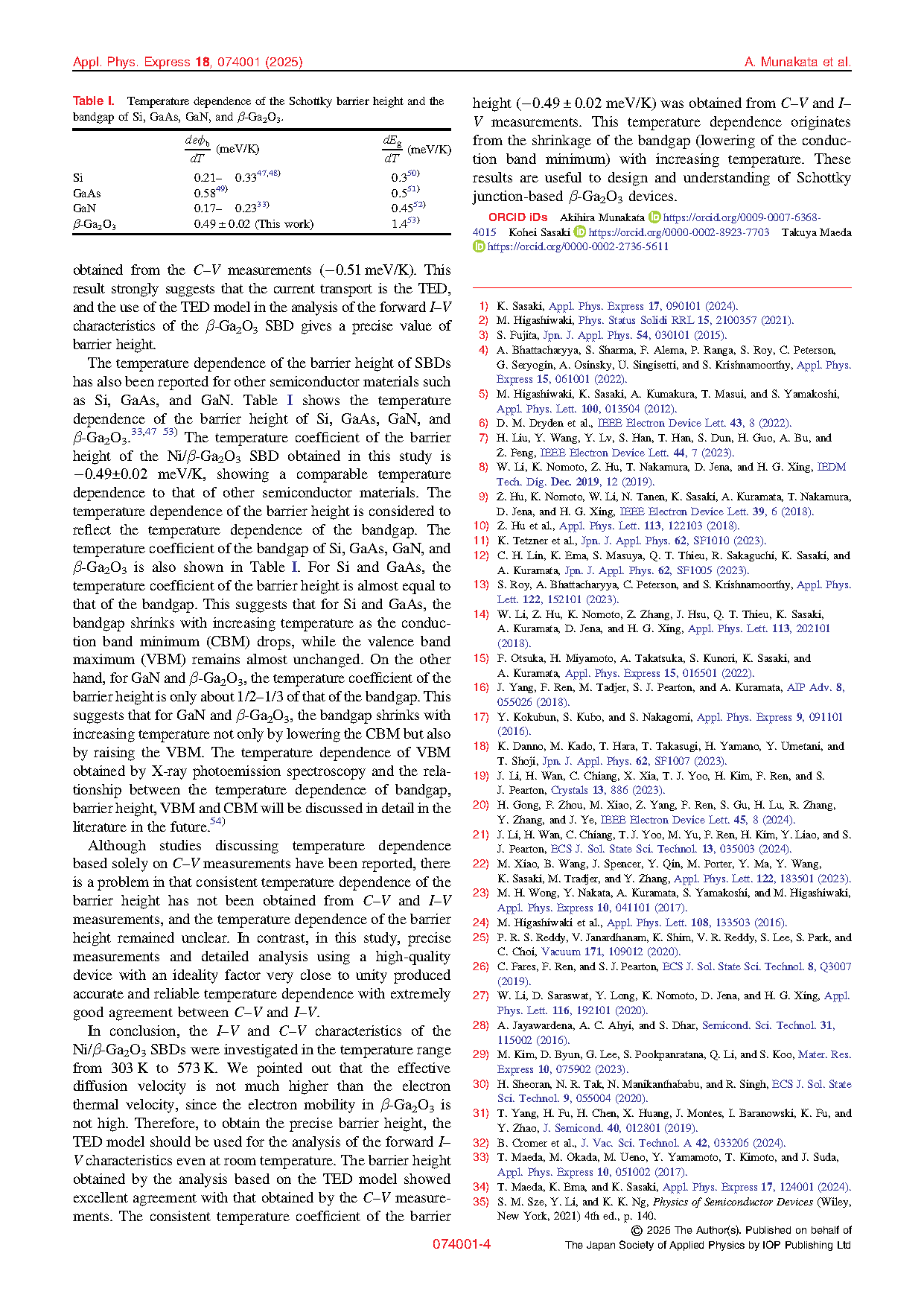
【Member Papers】Temperature dependence of barrier height in Ni/β-Ga₂O₃ Schottky barrier diode precisely determined by the analysis based on thermionic emission-diffusion model
日期:2025-07-25阅读:160
Researchers from the The University of Tokyo and Novel Crystal Technology, Inc. have published a dissertation titled "Temperature dependence of barrier height in Ni/β-Ga2O3 Schottky barrier diode precisely determined by the analysis based on thermionic emission-diffusion model" in Applied Physics Express.
Background
Beta-phase gallium oxide (β-Ga2O3) is a highly promising material for high-voltage and high-efficiency power devices owing to its wide bandgap of 4.4–4.7 eV and high critical electric field (estimated to exceed 8 MV/cm). The 2–4 inches epi-wafers are commercially available, enabling practical device fabrication. Metal/semiconductor field effect transistors (MESFETs), vertical FinFETs, and Schottky barrier diodes (SBDs) with high breakdown voltage and large current density operations have been successfully demonstrated. Although achieving p-type conduction in β-Ga2O3 remains challenging, p–n heterojunction diodes utilizing nickel oxide (NiOx) have been demonstrated. Additionally, inversion-type normally-off β-Ga2O3 MOSFETs utilizing N-ion implantation have also been demonstrated.
A Schottky junction serves as a fundamental building block for electronic devices. Especially, barrier height is the most important physical property, which determines turn-on voltage and reverse leakage in an SBD. The barrier height properties of metal/β-Ga2O3 have been investigated. Higashiwaki et al. reported that the temperature-dependent capacitance–voltage (C–V) and current–voltage (I–V) characteristics of the Pt/β-Ga2O3 SBDs. Nearly ideal characteristics were presented. However, the temperature dependence of the barrier height was not discussed in detail. Cromer et al. reported the temperature dependence of barrier height for heavily doped β-Ga2O3 SBDs with PtOx, IrO2, and RuO2 Schottky contacts. The barrier height obtained from C–V and I–V based on the thermionic field emission (TFE) model showed inconsistencies: the barrier height from C–V decreased but that from I–V slightly increased with increasing temperature. The temperature dependence of the barrier height determines the device operation which depends on the temperature. Precise determination of the temperature dependence of the Schottky barrier height is essential for design and simulation of β-Ga2O3 devices.
Abstract
Temperature dependence of the barrier height in a Ni/β-Ga2O3 Schottky barrier diode has been investigated in 303–573 K. The barrier height obtained by the capacitance–voltage (C–V) measurements slightly decreased with increasing temperature with the temperature coefficient of −0.51 meV/K. Since the electron mobility in β-Ga2O3 is not high, the thermionic emission-diffusion (TED) model was used for the analysis of the current–voltage (I–V) measurements. The consistent temperature coefficient of −0.49 ± 0.02 meV/K was obtained from the C–V and I–V measurements, suggesting that the origin of the temperature dependence of the barrier height of Ni/β-Ga2O3 stems from the shrinkage of the bandgap (the lowering of the conduction band minimum).
Conclusion
In conclusion, the I–V and C–V characteristics of the Ni/β-Ga2O3 SBDs were investigated in the temperature range from 303 K to 573 K. We pointed out that the effective diffusion velocity is not much higher than the electron thermal velocity, since the electron mobility in β-Ga2O3 is not high. Therefore, to obtain the precise barrier height, the TED model should be used for the analysis of the forward I–V characteristics even at room temperature. The barrier height obtained by the analysis based on the TED model showed excellent agreement with that obtained by the C–V measurements. The consistent temperature coefficient of the barrier height (−0.49 ± 0.02 meV/K) was obtained from C–V and I–V measurements. This temperature dependence originates from the shrinkage of the bandgap (lowering of the conduction band minimum) with increasing temperature. These results are useful to design and understanding of Schottky junction-based β-Ga2O3 devices.
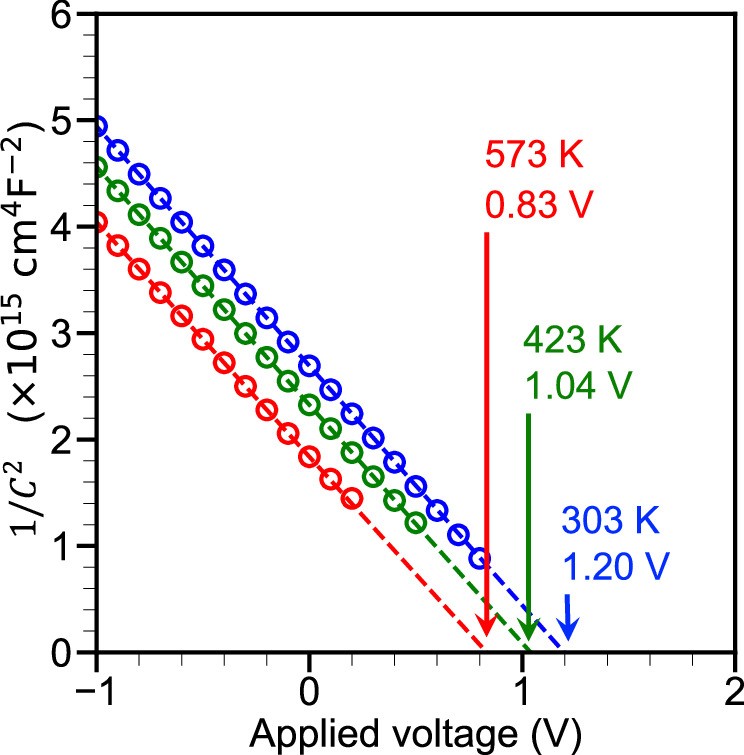
Fig. 1. The capacitance–voltage (C–V) characteristics of the Ni/β-Ga2O3 SBD at 303, 423, and 573 K in the 1/C2–V plots.
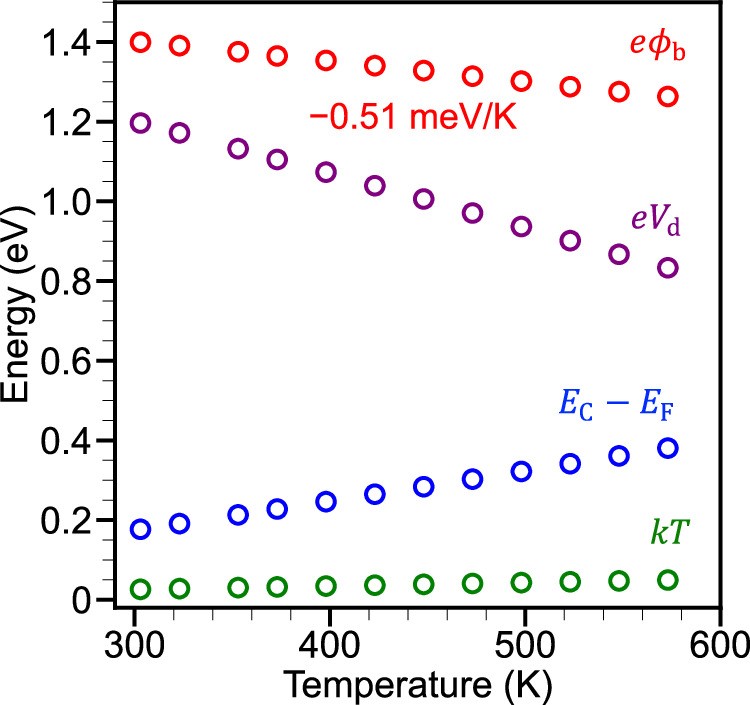
Fig. 2. Temperature dependence of eΦb (red), eVd (purple), EC - EF (blue), and kT (green).
DOI:
doi.org/10.35848/1882-0786/ade75b
